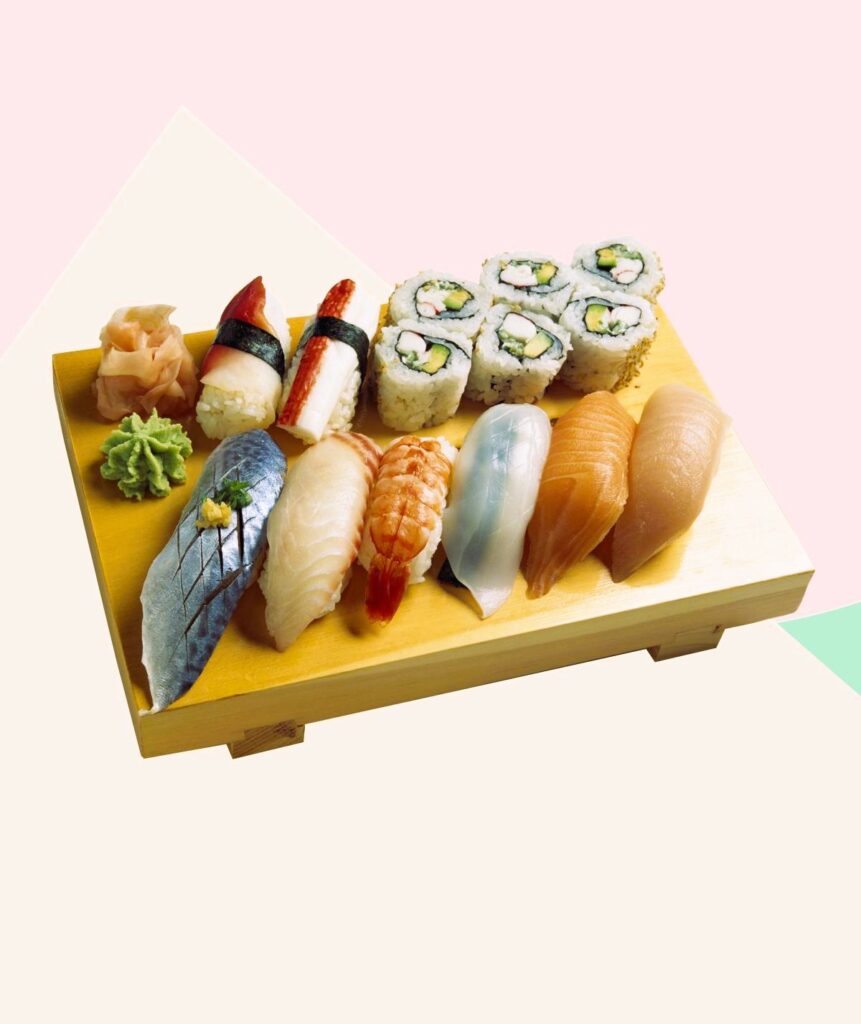Sushi: a word that conjures images of delicate, perfectly crafted morsels, each a testament to the culinary art form that has captured the hearts and palates of food enthusiasts worldwide. Beyond its delectable taste, sushi is an art form, a harmonious blend of flavors, textures, and visual aesthetics. In this exploration, we venture into the captivating world of sushi, taking an insider’s look at the intricate process of crafting sushi rolls, the mastery of sushi chefs, and the cultural significance that lies within each roll.
The Meticulous Craft of Sushi Rolls
Central to the allure of sushi is the painstaking craftsmanship that goes into its creation. Sushi rolls, also known as makizushi, serve as the embodiment of this meticulous attention to detail. These rolls typically consist of vinegared rice, fresh seafood, vegetables, and occasionally tropical fruits, all encased in a sheet of nori (seaweed). The ingredients are layered carefully, then rolled into a compact cylinder, which is eventually sliced into bite-sized portions.
The process begins with a careful selection of top-tier ingredients. From the finest cuts of seafood to the freshest vegetables, each component contributes to the symphony of flavors that characterize sushi. Skilled sushi chefs take pride in sourcing ingredients that not only meet the highest standards but also reflect the essence of the cuisine they represent.
Precision and Technique in Sushi Making
The crafting of sushi rolls is a harmonious blend of culinary technique and artistic finesse. The rice, a foundational element of sushi, is cooked to perfection before being delicately seasoned with a mixture of rice vinegar, sugar, and salt. Achieving the ideal balance of flavors is essential, as the rice serves as the neutral backdrop against which the other ingredients shine.
The assembly of ingredients is a meticulous process that requires precision. A thin layer of rice is spread evenly across the nori, with a slight margin left at the edges. This space allows for the roll to be sealed tightly without compromising the presentation. The selection and arrangement of fillings are integral to creating both a visually stunning and harmoniously flavored roll.
The Mastery of Sushi Chefs

Becoming a sushi master is a journey that spans years of dedication and practice. Sushi chefs, or Itamae as they are known in Japan, undergo rigorous apprenticeships under the guidance of seasoned mentors. This training ensures the preservation of the artistry of sushi making while also allowing for innovation and personal expression. Choosing the perfect restaurant for your anniversary celebration, where do you start?
Sushi masters possess an intimate understanding of the ingredients they work with. Their ability to discern the freshness of seafood, achieve the perfect balance of flavors, and apply the precise amount of pressure while rolling is a testament to their commitment to their craft. Every movement is deliberate, reflecting a dedication to perfection that defines their culinary journey.
Cultural Significance of Sushi
Beyond its culinary allure, sushi holds a deep cultural significance. Originating in Japan, sushi was traditionally sold at street stalls and fostered a sense of community and togetherness. Over time, it evolved into an elegant dining experience that transcended geographical boundaries. In Japan, sushi is often enjoyed during special occasions, symbolizing the importance of family, friendship, and shared moments.
The global popularity of sushi has led to innovative adaptations that combine traditional techniques with local ingredients. From the fusion-filled California rolls to unique creations that reflect local flavors, sushi’s evolution is a testament to its adaptability while preserving its reverence for tradition.
In Conclusion
The artistry of crafting sushi rolls is a mesmerizing interplay of culinary precision and artistic expression. From the selection of ingredients to the mastery of technique, sushi chefs epitomize dedication and expertise. This culinary journey not only tantalizes the taste buds but also offers a glimpse into the rich cultural heritage that sushi embodies.
For further insights into sushi and its cultural significance, please visit the Wikipedia page on Sushi, or explore standards and practices related to food safety and preparation on the Canada.ca website’s Food and Nutrition section.

